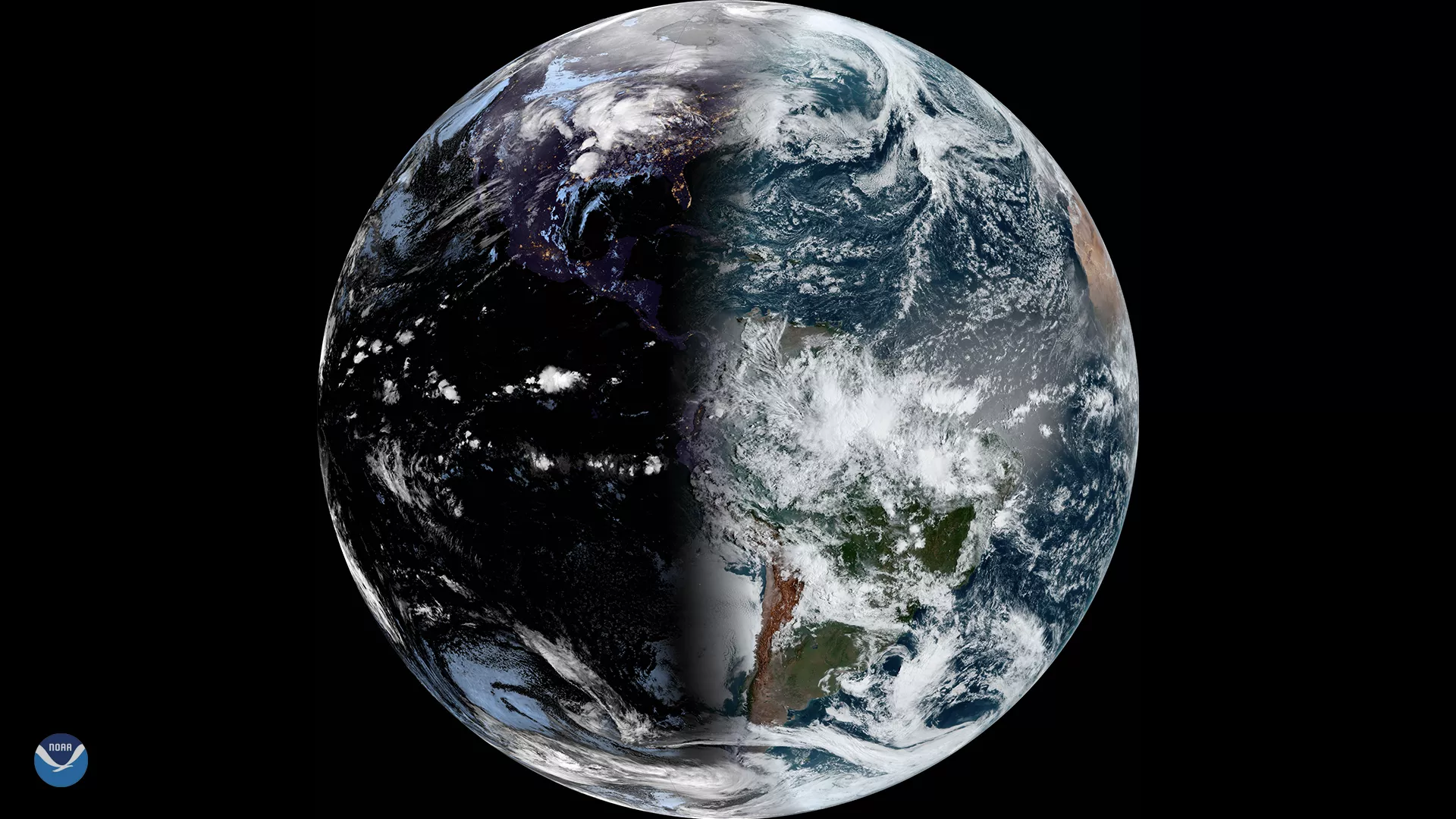
This lovely image of Earth was taken on March 19, 2020 by the GOES East satellite in honor of the start of astronomical spring in the Northern Hemisphere. The last time the vernal equinox occurred this early was in 1896, so it is the earliest spring anyone alive today has ever experienced, and it will occur even earlier in the future.
This year, the equinox will occur at 11:49 p.m. EDT, March 19, signifying the start of spring in the Northern Hemisphere and autumn in the Southern Hemisphere. During the precise moment of the equinox, daytime and nighttime will be nearly equal across the entire planet. From that point on, the Northern Hemisphere will experience earlier sunrises and longer daytimes, and the Southern Hemisphere will experience later sunrises and earlier sunsets.
The difference in seasons is due to the planet's axial tilt of 23.5 degrees as it orbits the sun. This tilt means the two hemispheres are exposed to different sun angles and variable lengths of daylight throughout the year. The equinoxes are the only two times a year that the sun rises exactly due east and sets due west for nearly every place on Earth. However, why did it occur so early this year?
First, we need to look at leap years, which occur every four years, usually. It would be logical to assume that years divisible by four, like 2020, have the extra day. But if a year is divisible by 100, it happens to skip a leap year. Thus, 1700, 1800, and 1900 did not have a February 29. However, if the year is divisible by 400, it will be a leap year anyway, which is why the year 2000 did have 29 days in February.
As each century wears on, the dates of the equinoxes and solstices slowly move earlier, from the 21st to the 20th and possibly even the 19th of March, but this slippage gets rectified by the omission of a leap day during the next century year, like in 1700, 1800, and 1900. This pushes the first day of spring, summer, and winter back to the 21st and resets the system.
Because the year 2000 did have a leap day, the equinox, which had naturally been creeping back earlier from the 21st to the 20th (where it's been for a while), now falls on the 19th for U.S. time zones. Additionally, every coming leap year from now on (2024, 2028, etc.) will have a brand new record earliest spring. The slippage will continue to occur throughout 2100, 2200, and 2300, until the next reset occurs in 2400.
The GOES East geostationary satellite, also known as GOES-16, keeps watch over most of North America, including the continental United States and Mexico, as well as Central and South America, the Caribbean, and the Atlantic Ocean to the west coast of Africa. The satellite's high-resolution imagery provides optimal viewing of severe weather events, including thunderstorms, tropical storms, and hurricanes.
